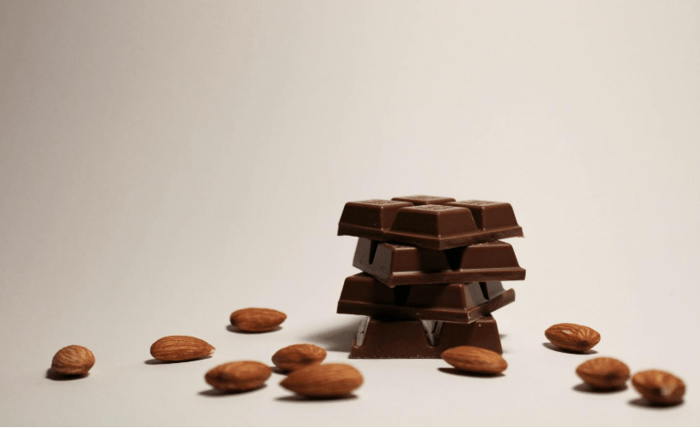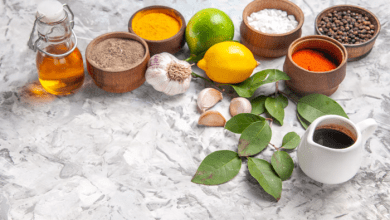
This year, the chocolate industry is massively shaped by widespread trends towards functionality, nutrition, and health-oriented indulgence. Consumers are leaning into chocolate that offers health benefits, whether it’s no added sugar, adaptogenic ingredients, protein-filled options, and the list goes on. All these qualities can have a long-term impact on the consumer’s wellbeing and health, going beyond the scrumptious, immediate aftereffect. Chocolate, with a focus on dark achocolate, offers numerous health benefits thanks to the rich quantity of flavonoids – aka antioxidants. Demand for quality, healthy chocolate that helps relieve stress, support sleep, and promote gut health, among other benefits, is rising, and the brands that cater to this growing demand are leading the way.
In this blog, we’re taking a closer look at functional chocolate – because yes, your favorite cocoa treat can actually do more than just taste good. It’s one of the biggest current trends that’s changing what people understand and want from one of the most in-demand products to date – chocolate.
Functional chocolate dissected
The phrase “functional chocolate” may not ring a bell to many, but with the increasing propensity for healthy cocoa-based products, coming across it in increasingly numerous instances is only getting more likely. Functional chocolate’s rising popularity could soon place it on par with alternative, or “alt,” chocolate.
The main difference between regular and functional chocolate is that the former is made solely for the consumer’s pleasure, while the latter is created to do more than just pamper the taste buds. Like it would perform an actual function, functional chocolate delivers health benefits when ingredients come from a reliable cocoa manufacturer who offers premium quality. With the cocoa products on the table, the confectionery or sweets manufacturer needs to process the beans, powder, and so on, in ways that maintain or enhance the product’s health potential. In short, the reaped benefits are often connected to particular health concerns, such as stress, inability to focus, poor sleep, and low energy thanks to the use of minerals, vitamins, nutraceuticals, amino acids, and botanicals. A big challenge for manufacturers remains striking the balance of ingredients.
There’s a chocolate for each goal
If you’re on the hunt for chocolate that helps with stress, look for products rich in antioxidants and magnesium – both are known to ease anxiety and stress symptoms. Some brands making “brain-boosting” chocolate use cocoa that’s high in flavonoids, with many tossing in berries for an extra antioxidant kick. The chocolate marketed to offer an energy boost should achieve the right combo of fats and carbs. Some products use fats to coat the sugar, which promotes a slower release of the sugar into the bloodstream. Others might go for energizing add-ins like schizandra berry, caffeine, L-Tyrosine, and taurine.
Lastly, if better sleep is the goal, seek out products that contain calming ingredients like chamomile, valerian root, or melatonin, used in combination. However, if your chocolate’s potential is high, you’ll need to consider how much (and if) you consume if you plan on, say, driving later, or doing anything that’ll require focus and quick reaction.
Consuming chocolate to increase energy levels might just be the most exciting opportunity in the functional food space. If energy supplement makers manage to nail the branding and flavor of their products, chocolate could be an easy (and super profitable) way for them to diversify their portfolio.
The sector’s development trajectory
Functional chocolate is starting to flood store shelves, and grab consumer attention. In light of building momentum, brands are exploring various possibilities for their products, which often tick boxes like the following:
- Boosted health benefits, with more protein-loaded options in the mix
- Bolder, more adventurous flavors such as salt, exotic fruits, or chili to keep things fresh and stand out from the crowd
- Sustainable production methods to appeal to eco-conscious buyers
- More plant-based choices to cater to the growing demand for dairy-free and vegan treats
- Premium offerings, with upscale ingredients and flavor combos, especially from health and energy supplement producers that buyers already trust
- Smaller, snackable sizes to compete with traditional “fun-sized” chocolates as the king-size is waning.
The main IP concerns to consider
As the market for functional chocolate expands, the competition naturally grows, meaning that some of the most valuable aspects of a brand’s product are at a higher risk of being misused or copied. These strong points can range from clever packaging to formulations, processing, and branding. An opportunistic brand might try to source beans, nibs, liquor, butter, or powder from the same cocoa wholesale distributor as the brand it’s aiming to emulate – hoping to replicate its products and, eventually, its success. And truth be told, such behavior is inherently natural, since everyone wants a piece of the pie. However, there are certain intellectual property (IP) characteristics that differentiate one product from another, offering the opportunity for your offerings to stand out if you engage in this domain.
Here are the main IP elements you should consider:
- Supplement and ingredient formulations – these can be secured by patents, offering exclusive rights over novel combinations or processes
- Brand identity – the slogan, logo, name, and other distinctive brand elements that trademarks can protect
- Proprietary data, recipes, and manufacturing techniques – these can be safeguarded as trade secrets, as long as they remain confidential and offer a competitive edge
- Product appearance and design – this includes marketing visuals, shape, packaging, and other design features used in branding or marketing, which may be protected by registered or unregistered design rights.
Ending note
Functional chocolate is more than a passing trend – it’s a growing power reshaping the confectionery landscape. As consumers continue to seek products that support wellness without compromising on taste, the opportunity for innovation remains. From stress relief to energy support, functional chocolate delivers benefits that go far beyond simple indulgence. If you aim to capitalize on this trend, now’s the time to invest in what makes your chocolate stand out – and ensure it remains uniquely yours in a booming market.




